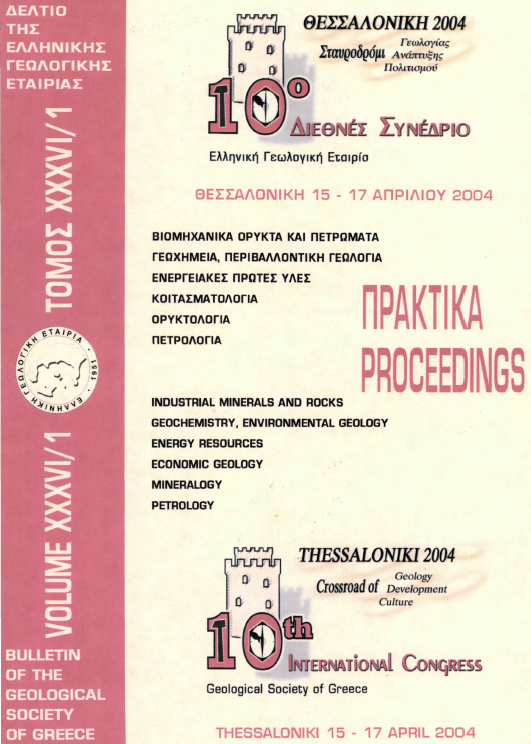Συνθήκες γένεσης του λιγνίτη του Γκραίκα, Βόρεια Πελοπόννησος

Περίληψη
Στην παρούσα εργασία μελετάται η Ανωπλειοκαινική/Κατωπλειστοκαινική λιγνιτική εμφάνιση του Γκραίκα στην ορεινή Αιγιαλεία (Β. Πελοπόννησος). Ο λιγνίτης παρουσιάζει υψηλή περιεκτικότητα σε τέφρα και ολικό θείο. Τα αποτελέσματα της προσεγγιστικής και της στοιχειακής ανάλυσης και της μέτρησης της ανακλαστικότητας του Ευ-ουλμινίτη Β κατατάσσουν τον συγκεκριμένο γαιάνθρακα στο στάδιο του μαλακού λιγνίτη. Από τα macerai επικρατούν ο Αττρινίτης και ο Ντενζινίτης, ενώ τα macerai των ομάδων Λειπτινίτη και Ινερτινίτη συμμετέχουν σε χαμηλά έως μέτρια ποσοστά. Από διαγράμματα φάσεων προκύπτει, ότι ο λιγνίτης προήλθε από τύρφη που σχηματίστηκε κΰρια από πόες με μικρή συμμετοχή δένδρων, σε λιμναίο έως λιμνοτελματικό περιβάλλον υπό την επίδραση υφάλμυρων συνθηκών.
Λεπτομέρειες άρθρου
- Πώς να δημιουργήσετε Αναφορές
-
ΚΑΛΑΪΤΖΙΔΗΣ Σ., ΠΑΠΑΖΗΣΙΜΟΥ Σ., & ΧΡΗΣΤΑΝΗΣ Κ. (2001). Συνθήκες γένεσης του λιγνίτη του Γκραίκα, Βόρεια Πελοπόννησος. Δελτίο της Ελληνικής Γεωλογικής Εταιρείας, 34(3), 1195–1204. https://doi.org/10.12681/bgsg.17183
- Ενότητα
- Ενεργειακές Πρώτες Ύλες

Αυτή η εργασία είναι αδειοδοτημένη υπό το CC Αναφορά Δημιουργού – Μη Εμπορική Χρήση 4.0.
Οι συγγραφείς θα πρέπει να είναι σύμφωνοι με τα παρακάτω: Οι συγγραφείς των άρθρων που δημοσιεύονται στο περιοδικό διατηρούν τα δικαιώματα πνευματικής ιδιοκτησίας επί των άρθρων τους, δίνοντας στο περιοδικό το δικαίωμα της πρώτης δημοσίευσης. Άρθρα που δημοσιεύονται στο περιοδικό διατίθενται με άδεια Creative Commons 4.0 Non Commercial και σύμφωνα με την οποία μπορούν να χρησιμοποιούνται ελεύθερα, με αναφορά στο/στη συγγραφέα και στην πρώτη δημοσίευση για μη κερδοσκοπικούς σκοπούς. Οι συγγραφείς μπορούν να: Μοιραστούν — αντιγράψουν και αναδιανέμουν το υλικό με κάθε μέσο και τρόπο, Προσαρμόσουν — αναμείξουν, τροποποιήσουν και δημιουργήσουν πάνω στο υλικό.





